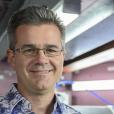Strategic research agreement
Strategic partnership with the University of Sydney expanded to continue a long history of research collaboration.

Showing 881 - 900 of 1188 results
Strategic partnership with the University of Sydney expanded to continue a long history of research collaboration.
Mathematical insights explain inconsistencies in experimental data: pyrochlore transformation into defect fluorite or not?
Accelerator technique used in pioneering biomaterials research led by the University of Sydney.
New oxygen ion conducting material for use in solid oxide fuel cells and other devices
Dr Linda Croton, a Research Fellow at Monash University, has been awarded the 2020 ANSTO Australian Synchrotron Stephen Wilkins Thesis medal for her outstanding work using synchrotron-based X-ray for brain imaging.

ANSTO researchers are investigating nuclear propulsion systems for applications on the sea and in space.

Oksana is part of the ANSTO graduate development program. Currently, she is working in the radioisotope research and development team, investigating separation techniques for isotope production.

AINSE study tour takes ANSTO and key stakeholders to Japan.
Dr Jessica Hamilton, a beamline scientist at the Australian Synchrotron, has won the Falling Walls Lab competition hosted by the Australian Academy of Science for her 3 minute presentation on a novel approach to using mining waste for carbon dioxide capture and a source of carbonate minerals. The event is held to deliver solutions to some of the most promising challenges of our time.
Research undertaken by Flinders University, the University of Cincinnati (US), Guangzhou University (China) and ANSTO has evaluated a new process to encapsulate fish oil in nanoparticles

Dr Joseph Bevitt is a senior instrument scientist on the Dingo radiograph/tomography/imaging station, and scientific coordinator for the Australian Centre for Neutron Scattering.
The Program Advisory Committees review proposals submitted to a particular beamline at the Australian Synchrotron
Using PET and simulations to verify the accuracy of dose and range in advanced therapy with heavy ions
Your efforts are helping better manage our wetlands and waterways, and protect the precious wetland birds that rely on them.